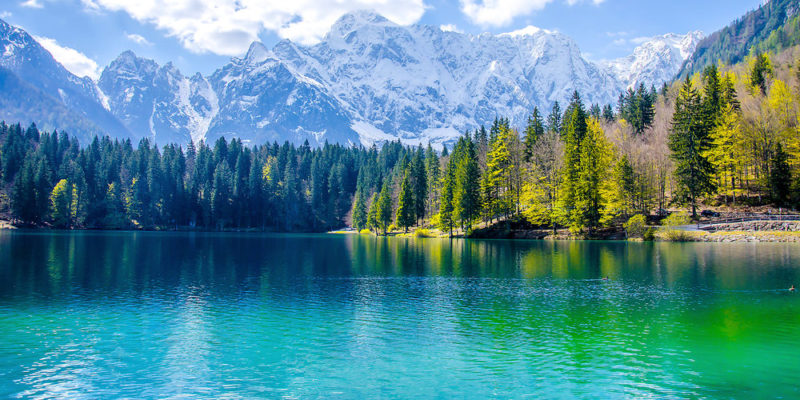We explain what a lake is, how it is formed and classified. Also, what are its main characteristics, flora, fauna and more.
What is a Lake?
Lakes are bodies of water that are surrounded by land . A lake can contain either fresh or salt water. They present waters that are called ” short-lived ” since these waters can be absorbed by the land that surrounds them or evaporate.
The definition of a lake is often confused with that of a pond . The difference is that the lake has a larger dimension than the pond.
Since the lake is water that is crossed by dry land , it is not surprising that it changes its volume and even dries up or becomes a swamp. The latter are named after seasonal or ephemeral lakes.
Formation of the lakes

They are divided into 5 groups:
- tectonic lakes. They occur when the earth’s crust sinks and this sinking is completed with water.
- volcanic lakes. They formed in the center or crater of an extinct volcano .
- Glacier lakes. As its name indicates, they are located on the side of a mountain and are formed by the melting of glaciers.
- classic lakes. They are formed as a result of excavations or by the emergence of groundwater.
- Waste lakes from ancient seas. Frequently ancient seas have become engulfed in dry land and so-called saltwater lagoons are formed.
Types of lakes
The lakes can be artificial (produced by the hand of man) or natural.
- artificial lakes. Generally, they are channeled or form barriers in order to reserve fresh water for consumption, irrigation or industrial use. The channeling of rivers (also artificial) to supply dry areas or towns with water can also be produced as a result of artificial lakes .
- natural lakes. They are those that are formed by the isolation effect of nature. For example by global warming (when the waters evaporate being isolated from the rest of the ocean ).
lake morphology

Lakes can be open or closed.
- open lakes. They are generally freshwater lakes. They are characterized by having an outlet towards waters of greater volume or flow (for example towards a river).
- closed lakes. The closed lakes are mostly saltwater. They are stagnant waters. The only way for these waters to escape is through evaporation.
Flora of the lakes
The flora of the lakes can vary in terms of species and size depending on several factors: the area in which the lake is located, the type of water in it, pollution (if any), etc. Therefore the flora is composed of mosses, ferns, reeds, reeds and algae in the underwater part of the lake.
Fauna of the lakes

The beaver is responsible for the formation of natural dams.
The fauna is also variable according to the characteristics described above. However, there is an animal that is characterized and specifically inhabits lakes. It is the beaver . This rodent is responsible for the formation of natural dams that help regulate the depth and extent of water.
Turtles , crabs, frogs, birds , and reptiles can also be found . The fish will also vary according to the type of water in it.
Freshwater and saltwater lakes
As mentioned above, there are certain lakes that have notable salinity characteristics . This is due to the fact that these waters come from the ocean and have been isolated from it by different climatic reactions or modifications of the tectonic plates .
Lake deformations

These deformations can be produced by the action of man or by natural issues where a river or the movement of more modern tectonic plates can modify the course of the water causing them to disappear or modify their dimension.
Consumption
The action of man on the lakes has altered (and continues to alter) their volume. Their consumption is associated with industry , electricity , artificial irrigation and even recreational activities.
Largest lakes

The 4 largest lakes are the following:
- Caspian Sea. Although its name refers to a sea, it is certainly a lake. It has an extension of 371,000 km2. This lake is located between Azerbaijan, Iran, Kazakhstan, Russia and Turkmenistan.
- Upper Lake. With an extension of 82,000 km2. It is located between the United States and Canada.
- Lake Victoria. Located between Uganda, Tanzania and Kenya, it has an extension of 69,482 km2.
- Lake Huron. Also located between the countries of Canada and the United States, it has an area of 59,570 km2.
Lake hazards
The danger of the lakes is mainly due to pollution or the excessive use that man makes of these waters. This produces an ecological imbalance that affects not only the flora and fauna, but also ends up contaminating the groundwater, notably altering the environment and exterminating several species, both plant and animal.
The above content published at Collaborative Research Group is for informational and educational purposes only and has been developed by referring reliable sources and recommendations from experts. We do not have any contact with official entities nor do we intend to replace the information that they emit.














